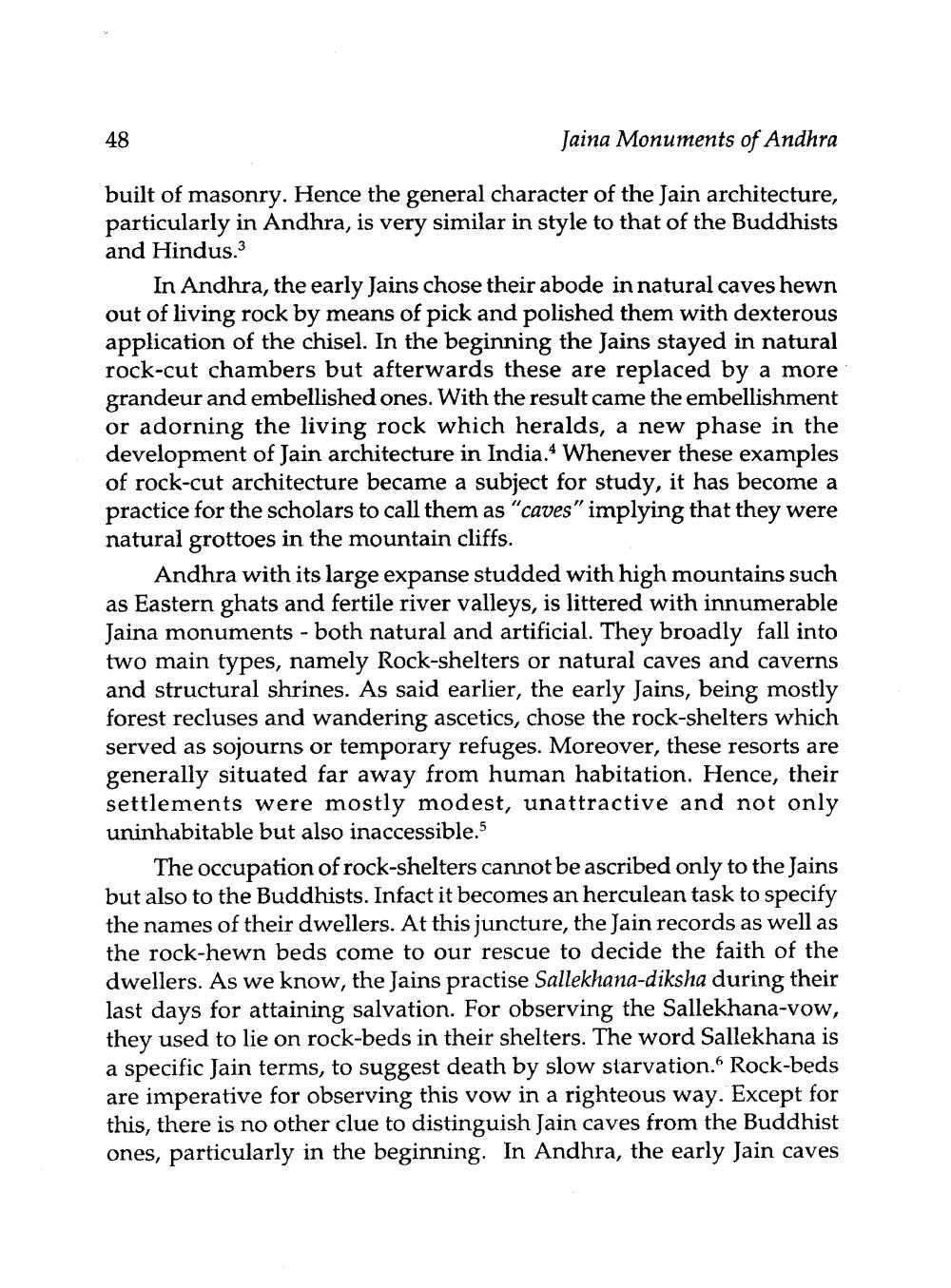________________
48
Jaina Monuments of Andhra
built of masonry. Hence the general character of the Jain architecture, particularly in Andhra, is very similar in style to that of the Buddhists and Hindus.3
In Andhra, the early Jains chose their abode in natural caves hewn out of living rock by means of pick and polished them with dexterous application of the chisel. In the beginning the Jains stayed in natural rock-cut chambers but afterwards these are replaced by a more grandeur and embellished ones. With the result came the embellishment or adorning the living rock which heralds, a new phase in the development of Jain architecture in India. Whenever these examples of rock-cut architecture became a subject for study, it has become a practice for the scholars to call them as "caves" implying that they were natural grottoes in the mountain cliffs.
Andhra with its large expanse studded with high mountains such as Eastern ghats and fertile river valleys, is littered with innumerable Jaina monuments - both natural and artificial. They broadly fall into two main types, namely Rock-shelters or natural caves and caverns and structural shrines. As said earlier, the early Jains, being mostly forest recluses and wandering ascetics, chose the rock-shelters which served as sojourns or temporary refuges. Moreover, these resorts are generally situated far away from human habitation. Hence, their settlements were mostly modest, unattractive and not only uninhabitable but also inaccessible.5
The occupation of rock-shelters cannot be ascribed only to the Jains but also to the Buddhists. Infact it becomes an herculean task to specify the names of their dwellers. At this juncture, the Jain records as well as the rock-hewn beds come to our rescue to decide the faith of the dwellers. As we know, the Jains practise Sallekhana-diksha during their last days for attaining salvation. For observing the Sallekhana-vow, they used to lie on rock-beds in their shelters. The word Sallekhana is a specific Jain terms, to suggest death by slow starvation. Rock-beds are imperative for observing this vow in a righteous way. Except for this, there is no other clue to distinguish Jain caves from the Buddhist ones, particularly in the beginning. In Andhra, the early Jain caves




